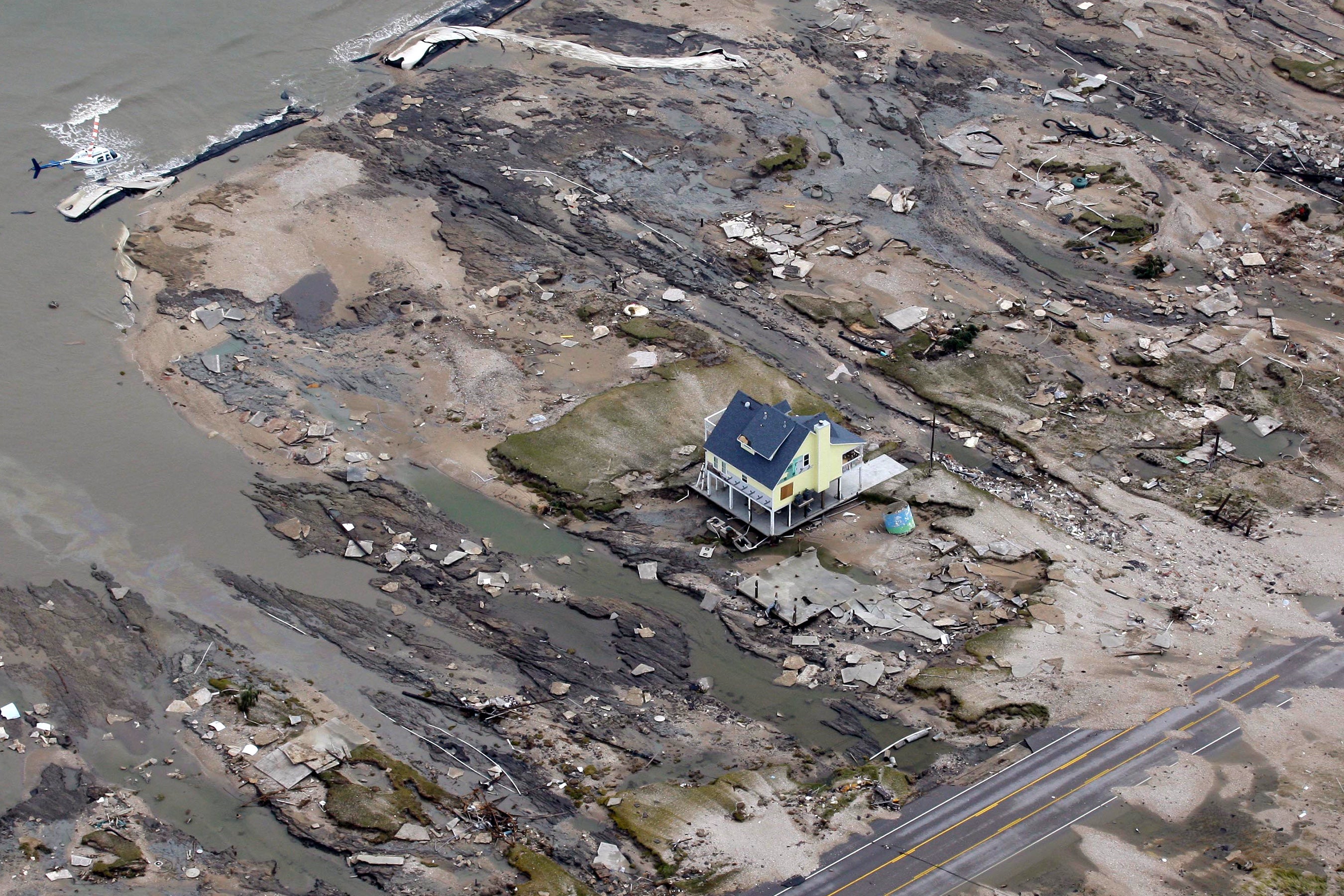
CLIMATEWIRE | Two houses are side by side. One is a crumpled mess of splintered wood and ripped insulation. The other stands perfectly intact.
This image is one that increasingly pops up on news sites and social media after hurricanes, floods and climate-fueled disasters. An accompanying caption often emphasizes that the intact home was built with a hurricane-resistant roof and flood-resistant materials.
Such images are enmeshed in a growing push to make buildings more resilient to climate impacts — an effort that a federal agency catapulted forward Thursday when it vowed to give every state up to $2 million next year to improve building codes.
The unprecedented funding — from the Federal Emergency Management Agency — follows a series of reports showing that most local building codes are archaic and leave millions of people highly exposed to climate impacts. It also comes after President Joe Biden launched an initiative in June 2022 to help states and localities adopt the latest building codes.
“This is the single largest investment ever at the federal level in support of hazard-resistant building codes,” said Gabe Maser, senior vice president for government relations at the International Code Council, which publishes model building codes that local officials can adopt.
“It sends an incredibly powerful message,” Maser added.
The new FEMA money comes as some state legislatures, under pressure from builders, block plans by state agencies to adopt new building codes. New codes — often criticized as costly — typically have stronger construction standards and account for the latest effects of climate change.
“The goal here is simple: Building codes save lives,” said Victoria Salinas, FEMA’s associate administrator for resilience. Salinas cited reports that partly blamed weak building codes and lax enforcement for the death of 56,000 people during an earthquake in Syria and Turkey in February.
“There are plenty of places in the U.S. where we still have a long way to go,” Salinas said. “Less than 25 percent of municipalities have adopted the latest building code.”
FEMA is offering $2 million to every state and U.S. territory — if they apply for the money and have their applications approved. The agency also is offering a total of $25 million to tribal nations.
When FEMA previously offered states annual grants for climate resilience, a few states never applied. Many others received only a portion of the available money.
“A lot of states are grudgingly accepting building codes,” said Leslie Chapman-Henderson, president of the Federal Alliance for Safe Homes. “This is going to help facilitate those states or local governments that are maybe on the fence.”
“There was a lot of denial about this years ago,” Chapman-Henderson added. “There’s no rational argument against building codes.”
Reports in recent years have outlined the value of new building codes and the failure of states and localities to adopt them.
A 2019 study by the National Institute of Building Sciences showed that the adoption of new building codes is far more cost-effective at reducing disaster damage than other strategies, such as elevating flood-prone homes or providing federal grants.
A scathing FEMA report in 2020 found that 65 percent of U.S. counties and municipalities had outdated building codes that exposed residents to “a dangerous, costly and unnecessarily high level of risk.” In March, the agency released an analysis that gave 40 states and territories the lowest possible rating for the quality of their statewide building codes.
“These reports keep coming out and are consistently finding that structures that are built to current codes or even codes that have been adopted in the last decade perform so much better than the structures around them,” said the code council’s Maser.
Maser’s nonprofit organization publishes model codes every three years for homes and commercial buildings through a collaborative process involving experts. The latest versions of the codes were released in 2021.
States can spend the FEMA money on enhancing their existing codes, studying new codes or training employees in using codes. States can distribute their $2 million share to local agencies.
FEMA is allocating the money as part of a larger grant program that will distribute $1 billion next year to states for projects that build resilience to disasters and climate impacts.
Under the grant program, known as Building Resilient Infrastructure and Communities, states are allowed to seek money to improve building codes. But very few of the applications to FEMA sought money for that purpose, according to Salinas, the agency associate administrator.
The lack of interest prompted FEMA to set aside $137 million of the grant funding for building codes.
“Given the gap we have to close in the nation, that’s why we’re trying this approach,” Salinas said. “We’re trying different approaches to incentivize behavior and adoption.”
Reprinted from E&E News with permission from POLITICO, LLC. Copyright 2023. E&E News provides essential news for energy and environment professionals.
























































